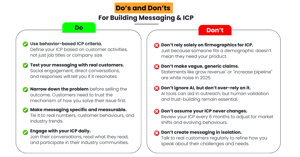If you’ve ever sent a sales email or a LinkedIn message and heard nothing back, this one’s for you.
It’s not that your product isn’t valuable. It’s not that your ICP doesn’t have the problem you solve. It’s usually the message. And in 2025, effective sales messages are the difference between pipeline and radio silence.
The game has changed. Your buyers are more skeptical, more distracted, and less forgiving of fluff than ever before. The old playbooks of “increase revenue” and “save time” just don’t cut it. So how do you write messages that actually land?
Let’s break it down.
What is Sales Messaging?
Sales messaging is all about creating personalised communication that speaks directly to your prospects. It’s the way you explain how your product or service solves their specific problems, answers their questions, and helps them achieve their goals. Great sales messaging doesn’t just inform—it sparks intrigue, guides potential customers through the sales journey and drives real conversations.
Sales Messaging: Why Getting It Right Is Make or Break
Sales messaging is how you communicate value to your buyer in a way that feels relevant, urgent, and credible. It’s the backbone of every cold email, LinkedIn DM, and outbound call.
But here’s the kicker: even the most polished outreach falls flat without messaging that speaks directly to your ICP’s world.
That means:
- No more vague promises.
- No more one-size-fits-all templates.
- No more selling the outcome before the mechanic.
You’ve got to do the work. That means understanding how your buyers talk about their problems, what activities they’re engaged in, and what context they’re operating in.
Sales Messaging Framework: How to Craft Messages That Hit
Want a repeatable system to write effective messages? Here’s a five-step sales messaging framework that works:
1. Start With Activity-Based Targeting
Forget job titles. Focus on what your buyers do—not just who they are. If your product supports a specific workflow or initiative, make sure your ICP is actively engaged in that. If they don’t have the activity or are doing the activity your product supports, your segmentation and targeting of your ICP is already amiss.
2. Revisit ICP Regularly to Adapt to Market Shifts
Market trends, competitor shifts, and customer behaviours change.
So, reflecting on your ICP probably once or twice a year is really important. There’s almost always ICP drift relative to what people are doing in the market.
3. Use Their Words, Not Yours
If you really want to have messaging that resonates with any prospect or ICP, the short answer is you gotta go spend time with them.
Engage directly with your ICP. Read their LinkedIn posts. Join their Slack communities. Talk to them. You’ll pick up on language that resonates—and more importantly, what doesn’t.
4. Balance AI with Human Personalisation
AI is great for personalisation and efficiency, but it requires human oversight to really build trust and authenticity. While AI can enhance research and scale outreach, fully automated outreach lacks the trust and credibility needed to drive conversions.
5. Help Them to Understand How You'll Get Them To Their Desired Outcome
We have all been taught to sell the outcome, but the issue is you can’t sell the outcome until someone truly believes in the mechanic for how you address the activity first.
Everyone wants to “save time” or “increase revenue,” but unless they understand how you’ll get them there, they won’t buy in. You need to figure out how your solution works in their context, then show them the steps, not just the result.
6. Use Social Media & Direct Research to Stay Close to Customers
Find ways to interact with them every single day, whether it's in cold call (add link to cold call) conversations, LinkedIn posts, comments, DMs, or customer interviews.
Engaging with your audience daily keeps you in tune with their needs and evolving pain points, shaping better messaging. Whenever possible, make it measurable and quantify the benefit. Instead of “reduce churn,” try “cut churn by 17% within 90 days by identifying at-risk customers early.
Specificity builds trust. Vague = ignored.
7. Test and Tweak in Real Life
Your message isn’t proven until it gets a response. Post it on LinkedIn. Drop it in cold emails (add link to cold email post). Talk it out in calls. Then adjust based on what gets traction. Get real world validation.
The medium will tell you if your messaging is resonating—are people engaging, responding, leaning in? If not, you need to tweak.
Effective Sales Message Examples That Work in 2025
Want to see some good sales messages in action? Let’s look at some effective sales messages examples from Robert Kaminski, messaging expert and Co-Founder at Fletch, that real sales teams are using to book more meetings in 2025:
Narrowing the problem
“We help you increase pipeline.”
→ “Ensure your emails land in inboxes through advanced email health checks.”
Why it works: Instead of a vague benefit, the message addresses a specific pain point.
Adding context & specificity
“Sales leaders are looking to build more pipeline.”
→ “Sales leaders are seeing a decline in inbound leads and are pushing AEs to generate pipeline, but many lack outbound skills.”
Why it works: Frames the challenge in a way that resonates with the current reality.
Making the value tangible
“Grow revenue with automation.”→ “We help you avoid sales follow-ups falling through the cracks with AI-driven workflow reminders.”
Why it works: Moves from an abstract concept to a clear, immediate impact.
Adding measurable results
“Our tool saves you time.”
→ “Automate 5 manual data entry tasks so your team can spend 3 extra hours selling each week.”
Why it works: Defines exactly how much time is saved and what it translates to.
Focusing on the ‘how’
“Increase conversion rates.”
→ “Turn website visitors into booked meetings by triggering outbound sequences when high-intent actions are taken.”
Why it works: Instead of just stating an outcome, explaining the mechanism that drives it.

What Makes The Most Effective Sales Messages in 2025?
Let’s recap the characteristics of effective sales messages this year that will cut through the noise:
- Behaviour-based, not just demographic-based
- Grounded in customer language
- Focused on the how, not just the outcome
- Measurable, not fluffy
- Validated in real conversations
It’s not about clever wordplay. It’s about showing that you understand their world, and that your solution fits their need.
Sales Messaging Is a Practice, Not a Pitch
If you’re still relying on templates from three years ago—or worse, vague claims like “we help you scale”—you’re going to lose to reps who are doing the work.
Great sales messaging isn’t a line. It’s a habit. It comes from staying close to your buyers, evolving with them, and constantly testing what works.
Want to stand out in the inbox? Speak like someone who’s been in their shoes. Show you get it. And back it up with clarity, not hype.
That’s how you win in 2025.
This is a deep dive article from our Prospecting Playbook. If you're wanting to learn more about sales prospecting, there's more where this came from!



.png?width=300&name=Copy%20of%20Untitled%20Design%20(1).png)